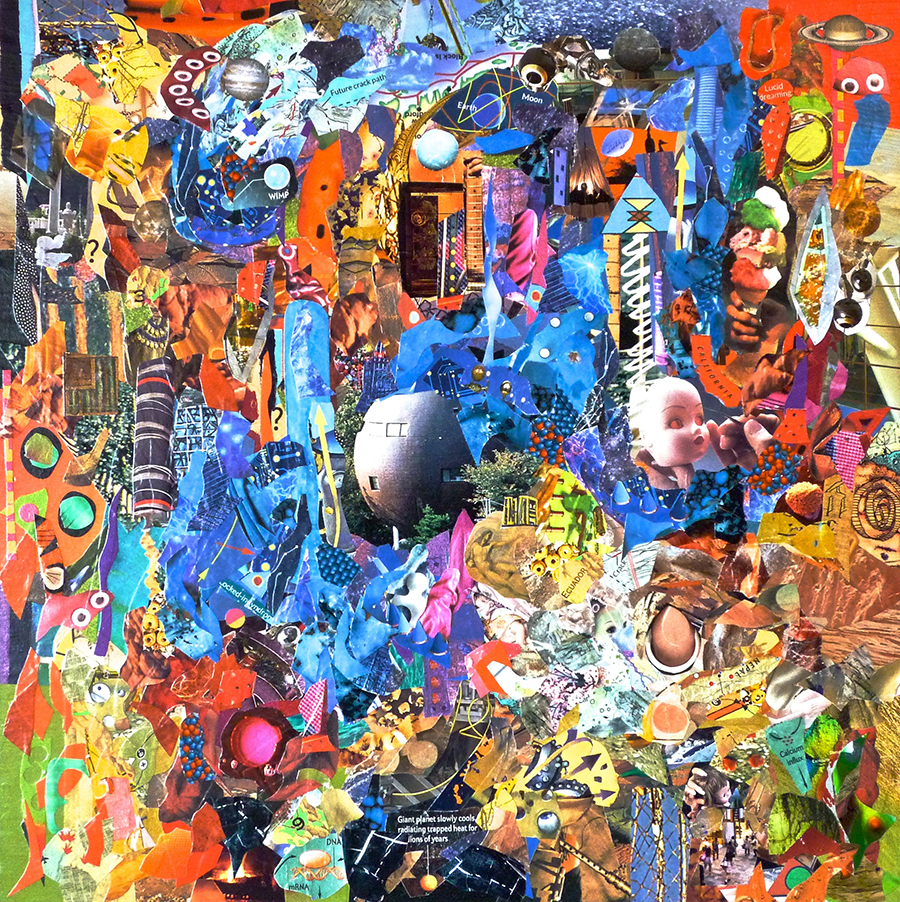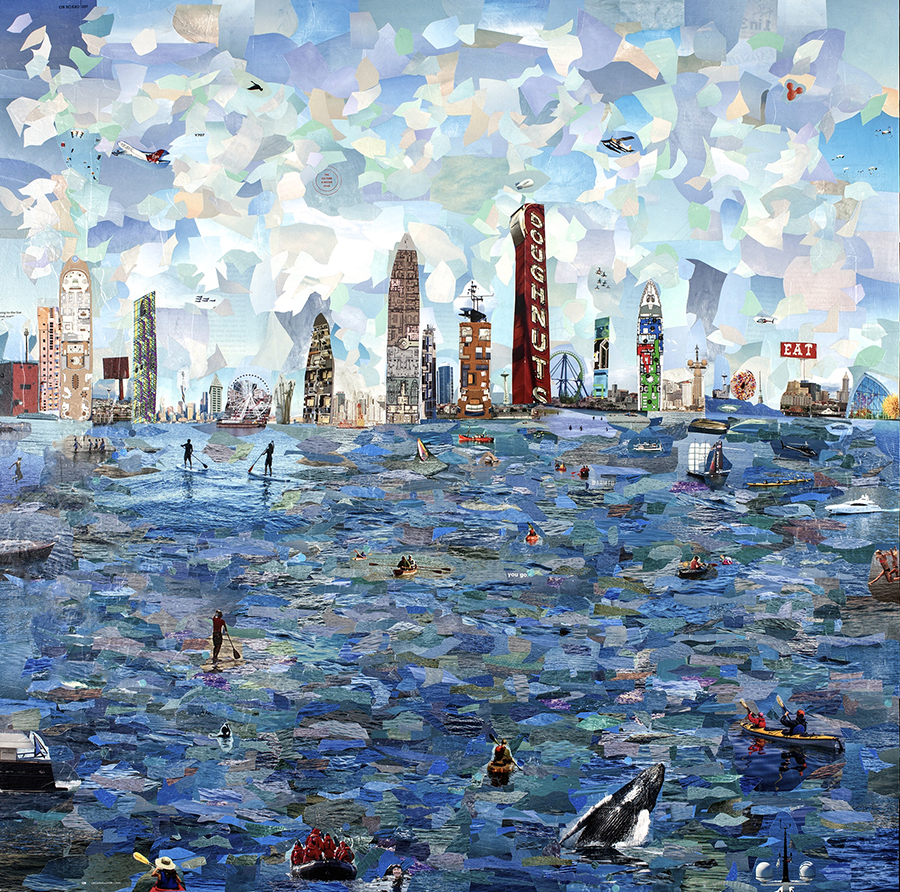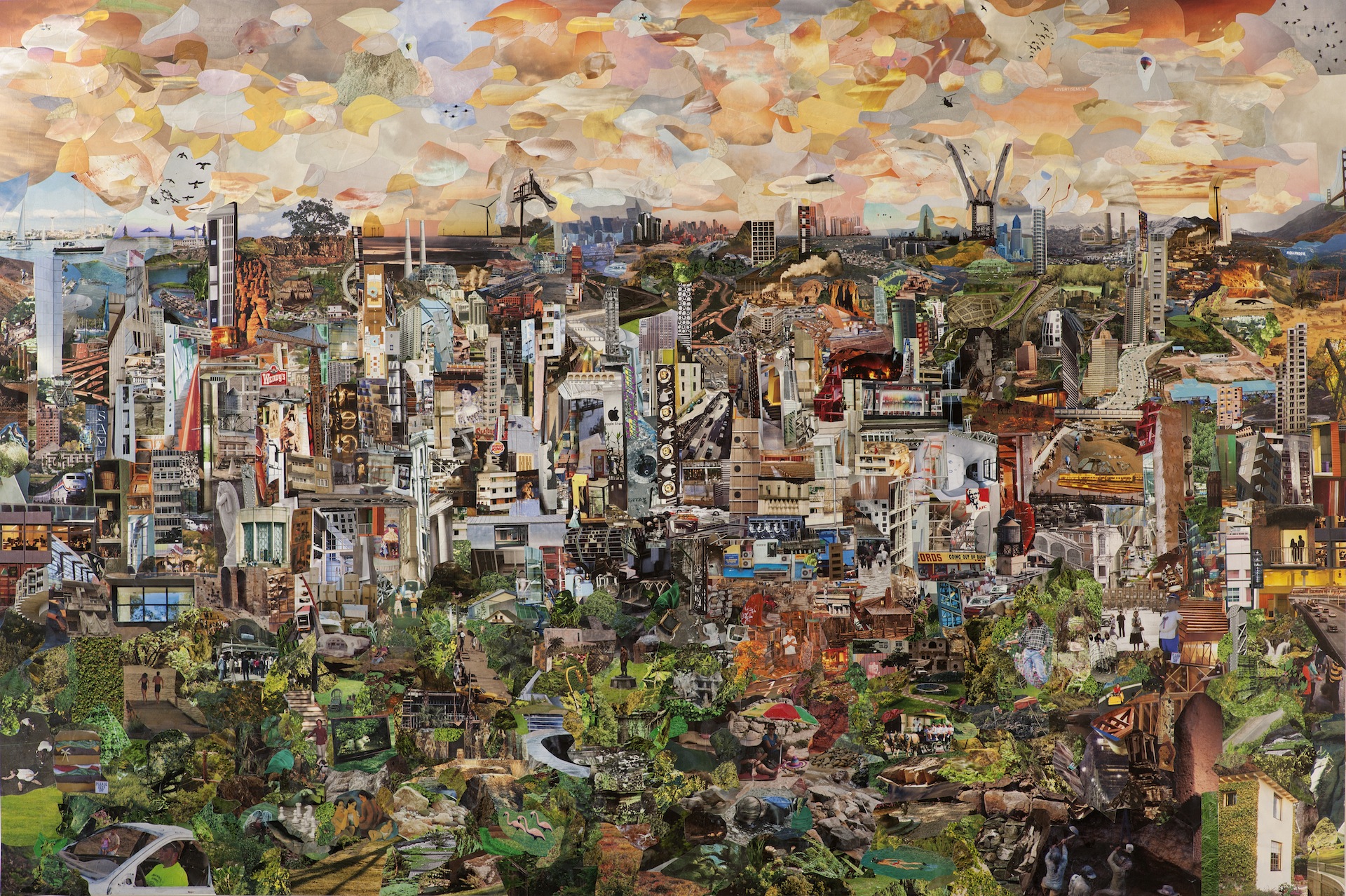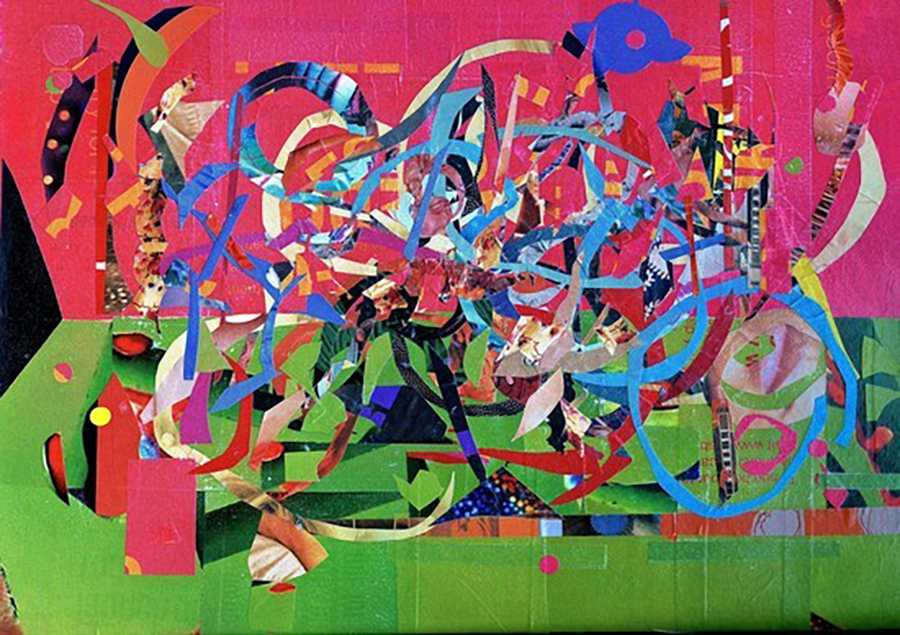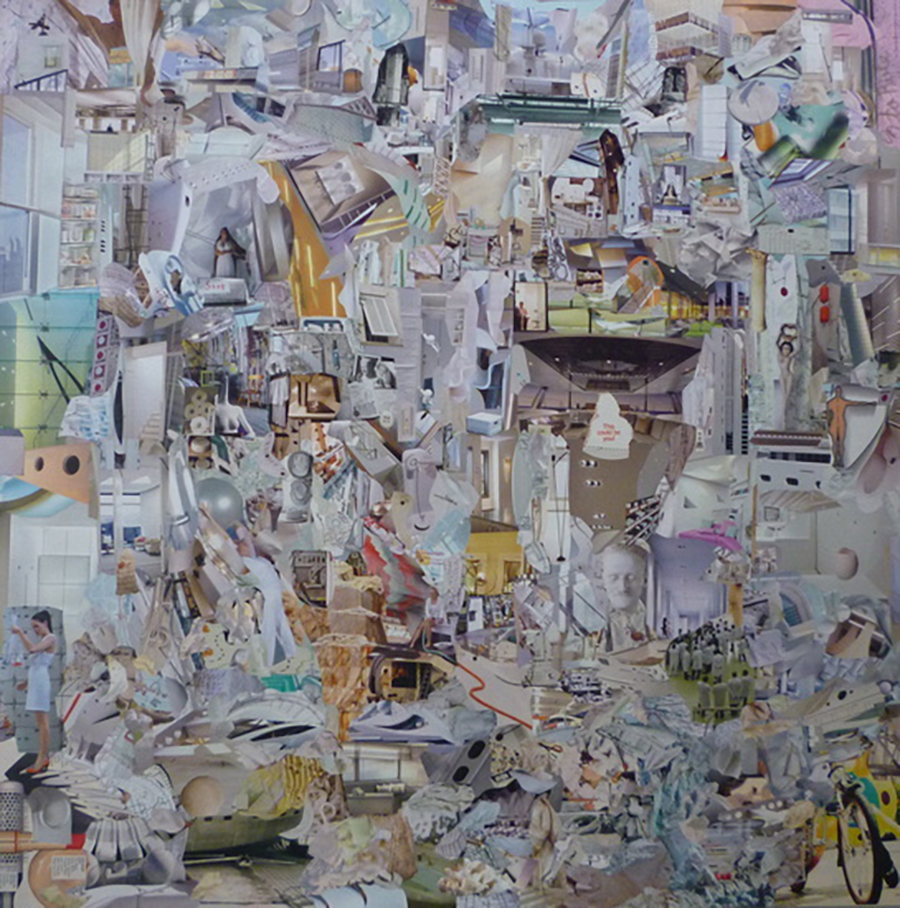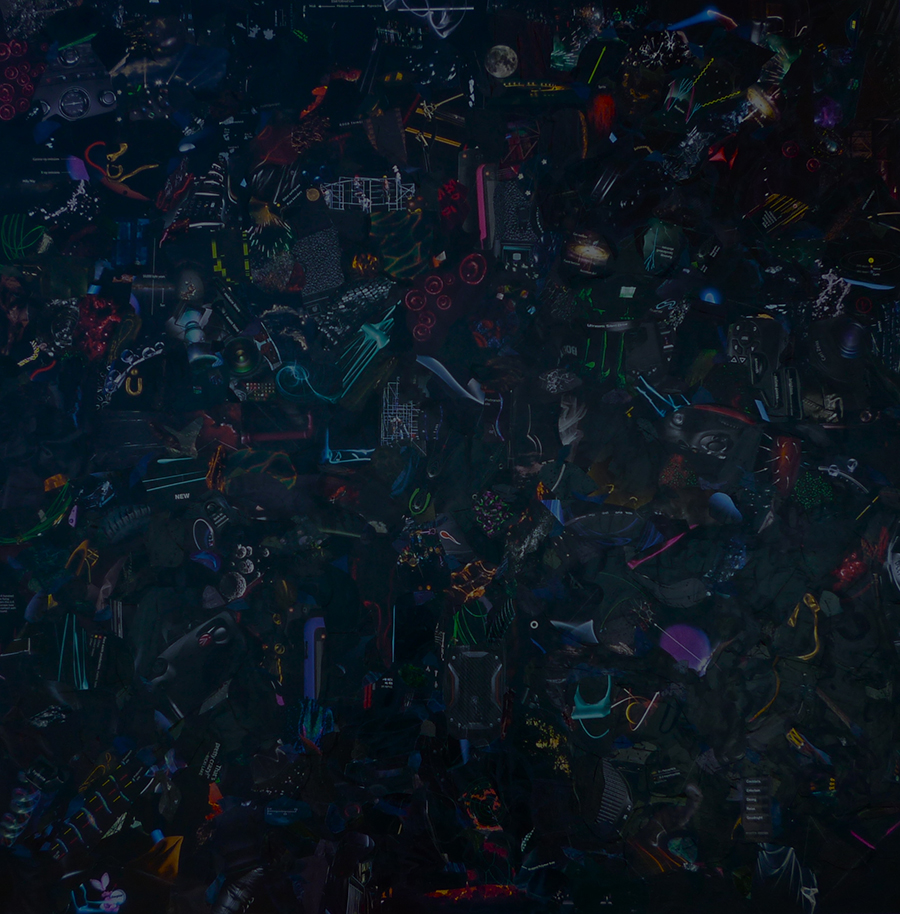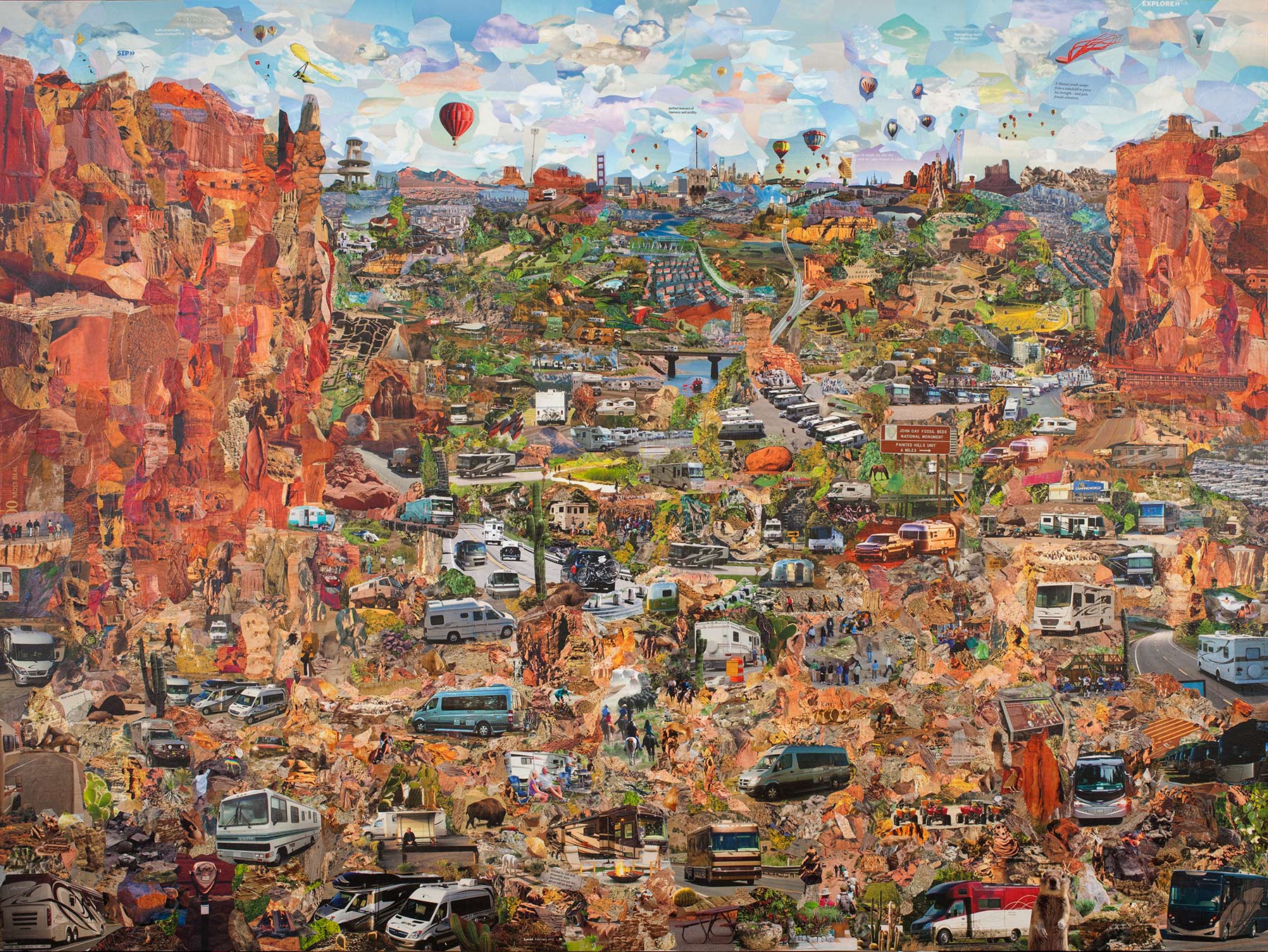Harold Nelson possesses the power to create entire worlds. Using only magazine clippings, Harold constructs collage-style dreamscapes that lie somewhere between order and chaos, to conjure up characters and artistic scenarios straight from his imagination.
With the use of bright colors and intentional disorganization, the self-taught artist explores, improvises and directs his way through his imagination. We spoke with Nelson about the power of his developing vision, his artistic process and more.
When did you first begin creating art? Did you always make collages?
I remember cutting and pasting at a very early age. My family came from the upper Midwest, and my mother came from a cut and paste and scrapbooking folk art tradition. Based on what my parents saved and what I still have in the archive, I was pretty active with art in elementary school. I didn’t study or do any art during high school and college, and I didn’t start doing art again until I needed an outlet when I started working for the government in the mid 1970s. Photography and collage were my entry back into art. Collage has been my main focus for the past 20 years or so.
How exactly do you maintain order amid the chaos in your paintings?
I have always been drawn to complex art with lots of incident. Examples are the great paintings of Jackson Pollock, Willem DeKooning, and Joan Mitchell, the collages of Kurt Schwitters and, more recently, the panoramic, detail-rich photographs of Edward Burtynsky. You learn from these great artists that just because there is a lot going on in the piece doesn’t mean you can avoid issues of balance and structure. You still want the piece to have great composition. Unconventional composition and composition with many more elements definitely present challenges, but they are fun to take on.
Where do you find material for your pieces?
Right now I use magazine paper exclusively from a wide range of different magazines.
Many of your collages seem to be located in fantastical worlds. How do you think up these unique landscapes?
Since I try to avoid preconception my work is pieced together in an intuitive, improvisational manner. Often, on the pieces that look like landscapes or cityscapes, I will simply sketch a horizon line and then everything else is built up based on what is pasted before it and what I find in going through my materials. Artists like Frank Gehry and Claes Oldenberg have definitely made this more fun. If you have a meatball hanging in a cityscape, after Oldenberg, you could definitely see it happening, and Gehry’s buildings just give you so much freedom in design.
Who are your main influences?
There are so many, but a few key ones are early painters Pieter Bruegel and Hieronymus Bosch, early modern painters Paul Cezanne and Henri Matisse, mid- twentieth century painters Jackson Pollock, Willem DeKooning, Joan Mitchell, and Cy Twombly. Also West Coast painters Richard Diebenkorn, Wayne Thiebaud, Elmer Bischoff, Hassel Smith, and more contemporary painters Gerhard Richter and Cecily Brown. Collage artists Kurt Schwitters, Romare Bearden, and Peter Blake, photographers Lee Friedlander, Garry Winogrand, Edward Burtynsky, and Berndt and Hilla Becher. Lastly and on a very personal level, Maryland collage artist George Sakkal, my teacher, mentor and friend.
What is your process for creating these collages?
One of the strengths of collage is using existing elements to create new associations and combinations. My process involves slowly layering progressively smaller pieces of paper and matte gel. I try to create new images that I sometimes cannot even conceive of at the outset. The challenge of each collage is to assemble the elements into a cohesive piece, and since vibrant color is very important to me, making sure the colors are balanced and harmonious. I let each piece happen and use whatever mix of the abstract and figurative that will lead to the best outcome. My pieces are meant to be seen from a distance as well as from close up, providing different visual rewards from varying perspectives. I also try to pack the pieces with enough visual interest that they will be able to be enjoyed on multiple levels over extended periods of time.
If you could have dinner with anyone (dead or alive) who would it be?
I would skip dinner and head for the Cedar Tavern of the early 1950s to hang out with Pollock, DeKooning, and Mitchell in the early evening before things got too weird.
What are you currently working on?
My usual work takes a lot of time to develop and complete. When I started posting on Instagram I decided that I needed to find things that took less time, that were more spontaneous, but still held together. I’m using my camera and scanner more to capture quick, virtual collages and sometimes using rudimentary photo software to manipulate the images. These pieces aren’t a replacement for my slow artwork, but they do often give me ideas to pursue in the larger more complicated pieces.
For more from Harold follow him on Instagram @hnelsontbg.

